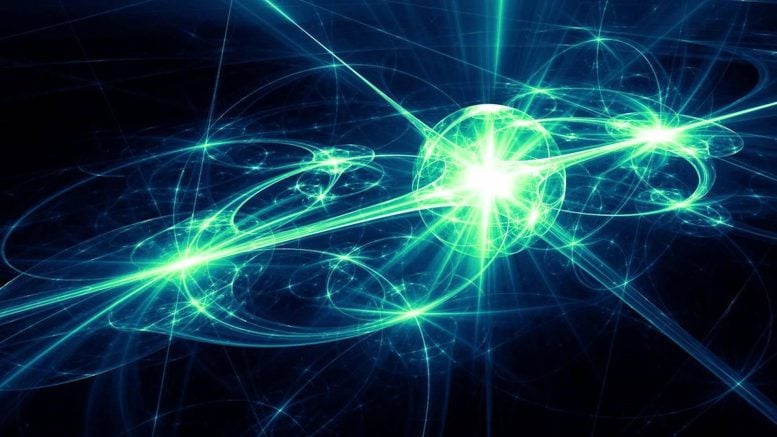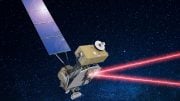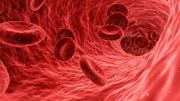
A new study delves into the behavior of active particles whose propulsion speed varies with their orientation. They found that these particles form non-circular clusters with a constant flow of particles entering and exiting. This research, significant for the potential control of particle assembly, has implications for creating programmable matter and advancements in medical technology.
Researchers have discovered previously unknown physical effects in systems made up of particles whose propulsion speed depends on their orientation.
The field of research focusing on self-propelled particles, known as active particles, is rapidly expanding. In most theoretical models, these particles are assumed to maintain a constant swimming speed. However, this assumption does not hold true for many experimentally produced particles, like those propelled by ultrasound for medical applications. Their propulsion speed varies with orientation.
A team of physicists, led by Prof. Raphael Wittkowski from the University of Münster and including Prof. Michael Cates from the University of Cambridge, conducted a collaborative study to explore how this orientation-dependent speed influences the behavior of particle systems, particularly in cluster formation.
They combined computer simulations with theoretical analysis to uncover new effects in systems of active particles with orientation-dependent speeds. Their findings were recently published in the journal Physical Review Letters.
Surprising Behaviors in Particle Systems
What is interesting from a physics point of view is that systems consisting of many active particles can spontaneously form clusters – even when the individual particles do not attract one another at all. When measuring the movement of the particles in the simulations, the researchers came up with a particularly surprising result.
“Normally, on a statistical average, the particles in such clusters simply stay where they are,” explains lead author Dr. Stephan Bröker from the Institute of Theoretical Physics at the University of Münster. “For that reason, we had expected that that would be the case here, too.” In fact, however, the physicists discovered something else: the particles constantly move out of the cluster on the one side and move back in on the other, thus producing a permanent flow of particles.
Novel Cluster Shapes and Practical Implications
There is also another difference from the “normal” case: the clusters that form in systems of active particles are normally circular. However, in the particles examined, the shape of the cluster depends on how strongly the orientation of the particles influences their propulsion speed – which can be stipulated by the experimentalist.
“Theoretically, at least, we can make the particles arrange themselves into any shape we want,” explains co-lead author Dr. Jens Bickmann.
“We can paint with them, so to speak.” In the simulations, the researchers observed ellipses, triangles, and squares. “This gives the results a practical importance,” says Dr. Michael te Vrugt from the Wittkowski team and likewise a co-author of the study. “For technical applications – for example, for the realization of programmable matter, it has to be possible to control the way the particles self-assemble – and with our approach that is indeed possible.”
The background: There are a large number of examples of active particles in biology – for instance, swimming bacteria or flying birds. Nowadays, it is also possible to realize artificially active particles (nano- and micro-robots): one aim, for example, is to implant them in the body for a targeted transportation of medication.
Reference: “Orientation-Dependent Propulsion of Active Brownian Spheres: From Self-Advection to Programmable Cluster Shapes” by Stephan Bröker, Jens Bickmann, Michael te Vrugt, Michael E. Cates and Raphael Wittkowski, 19 October 2023, Physical Review Letters.
DOI: 10.1103/PhysRevLett.131.168203
The study was funded by the German Research Foundation and the Study Foundation of the German People.









Your study delves into the behavior of active particles. Have you ever considered where the activity of the active particles you are studying comes from?
According to topological vortex gravitational field theory, spin is an essential property of topological vortices. Spin generates gravitation. Spin generates energy. Spin generates evolution. Spin generates time. In the interaction of topological vortices, the world is an interconnected whole. Each particles has its own phase field. Every particles maintain the state of themselves in space and time through the interaction and balance of these phase fields.
CP violation is a pseudoscientific theory spread by Physical Review Letters (PRL).
Today, CP violation has been viewed by contemporary physics as the key to a deeper understanding of both the behaviour of elementary particles and the Big Bang origin of the universe. Here is an introduction to the CP violations by Proceedings of The National Academy of Sciences (PNAS).
1. If CP-symmetry is not violated, then the matter and antimatter that would have been produced in equal amounts in the early universe would have been annihilated, leaving behind only radiation, whereas theories with CP-violation can explain why, as the universe evolved, a little more matter survived than antimatter, and that makes up the matter we see.
2. There’s strong evidence that elementary particles called quarks (which constitute protons and neutrons) do violate CP-symmetry. The first indication of this came in 1964, when Val Fitch and James Cronin at the Brookhaven National Laboratory discovered violations of CP-symmetry in the decay of K-mesons, which are composed of one type of quark and another type of antiquark. Fitch and Cronin were awarded the Nobel Prize in Physics in 1980 for their efforts.
3. Still, the amount of violation is not enough to explain the excess of matter. So, physicists have begun looking for CP-violation in other classes of particles, such as leptons, the group which includes electrons and neutrinos, among others.
Experiments around the world are looking for signs of the charge conjugation and parity (CP) symmetry violation. However, in scientific research, falsifiable is more important than confirmation. If the topological vortex and its twin anti-vortex conform to the physical characteristics of matter and anti-matter, no one believes that in topological phase transition, a little more matter survived than antimatter.
This is the hypocrisy, dirtiness, and ugliness of contemporary physics and so-called academic journals.
If you are really interested in science, you can browse the comments of the https://scitechdaily.com/microscope-spacecrafts-most-precise-test-of-key-component-of-the-theory-of-general-relativity/.
I hope more people dare to stand up and fight against the rampant pseudoscience, instead of being fooled by the pseudoscientific ideas of the Physics Review Letters (PRL).
Good luck to you all.
Many physical phenomena observed in scientific experiments are often not the whole picture, let alone the essence, the hidden variables in which are closely related to symmetry. Scientific research is inseparable from seeking truth from facts. We should see the essence through the phenomenon and act according to the laws of nature, rather than distorting the facts and making arbitrary inference.